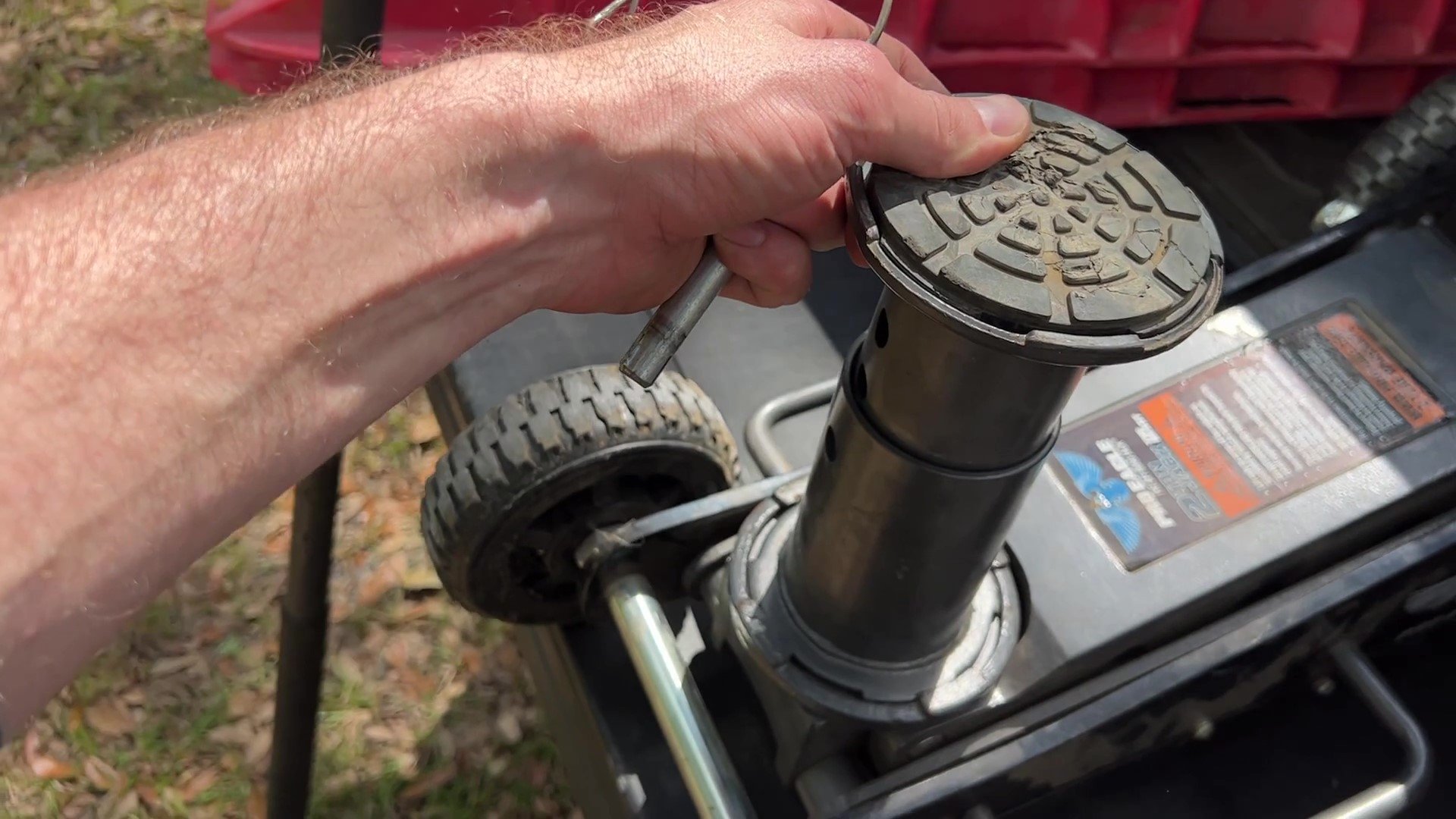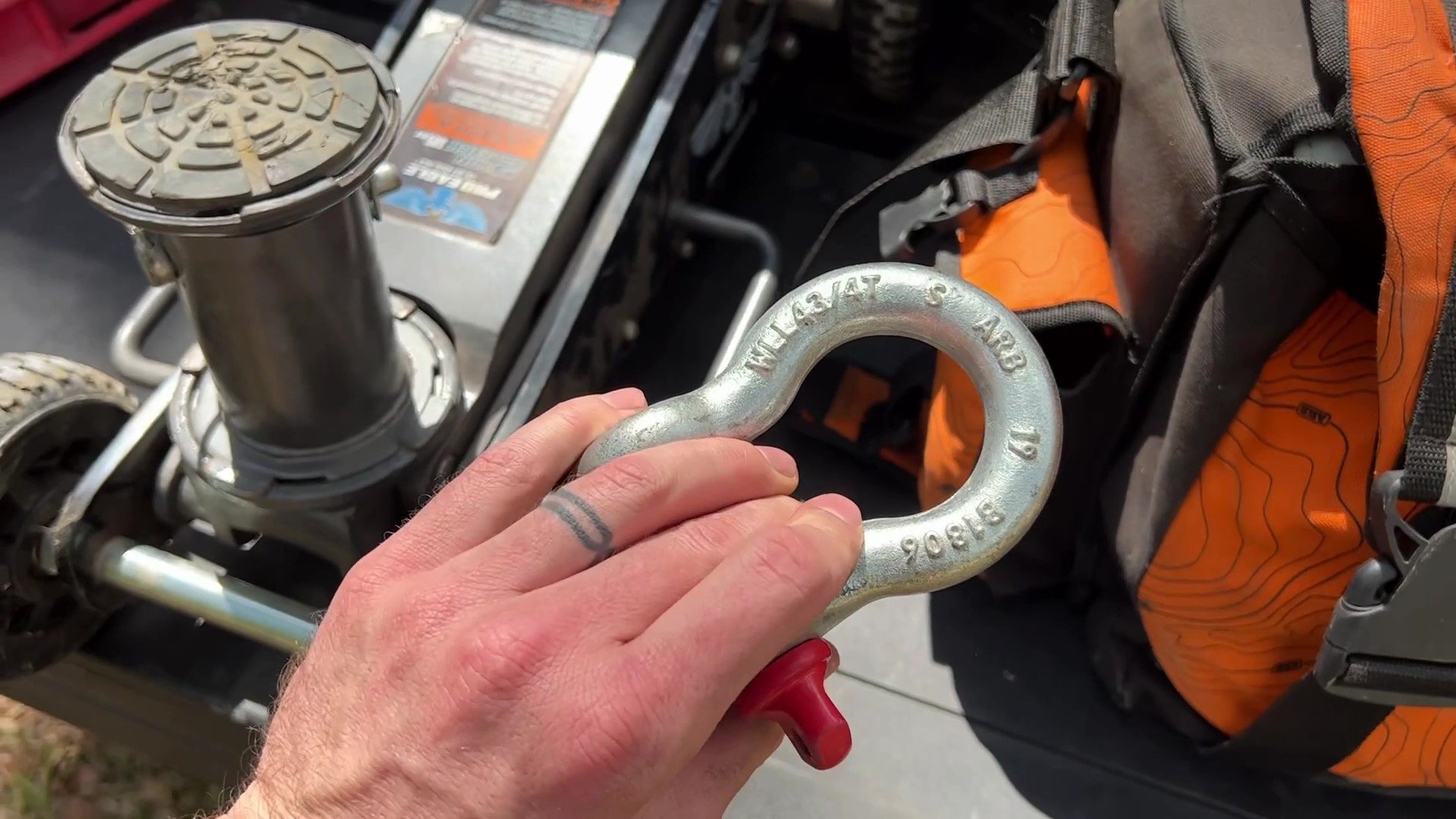My Off Road Recovery Gear
Let’s have a look at my recovery gear, what I carry in my truck at all times, and what I pack when I go wheeling. Click on the picture below for my video review:
Note, some of the below links are affiliate links that give me a small percentage of the proceeds. Your support is greatly appreciated.
I like to be prepared and believe there are certain things that everyone should carry in their car at all times. However, herein I will speak more specifically to recovery gear. There is certain gear that I carry in my truck at all times and other gear that I only pack when I know I will be going on off road trails. Lets start with the gear that is in my truck at all times.
Winch and accessories:
I have my winch mounted in my front bumper, hooked up and fully functional. I carry my winch controller and cable in my glove box. I also carry a winch line extension, and snatch ring in the toolbox in the bed of my truck. I carry a set of gloves, a soft shackle, and a bow shackle in my rear driver side door.
The winch is one of the most effective and versatile pieces of gear to be able to recover yourself or someone else. Therefore, I make sure I have everything I need for it in the truck at all times.
Winch: https://amzn.to/3OI5Up3
Snatch ring: https://amzn.to/41LLyzw
Gloves: https://amzn.to/446j0SM
Soft shackle: 3/8" Soft Shackle (srqfabrications.com)
Hard shackle: https://amzn.to/3Vd9UPT








Recovery gear in the truck at all times:
Under my rear bench seat I have my stock jack, and its relevant tools, a 20’ tow strap and some jumper cables. These are standard tools that are very useful.
Tow strap: https://amzn.to/3oDTlAw
Jumper cables: https://amzn.to/3LB7bfW



I also carry a power bank in the glove box that can be used to jump start a car, and I carry the relevant cables under my rear seat. I have used this many times to help jump start some stranded people who had a dead battery. It works really well, and can also be used to charge a phone or other devices with its USB output.
Power bank: https://amzn.to/3HkBUvg




I also have two toolboxes that I carry in the bed of my truck at all times. I use one to carry a lot of tools that I may need to work on my truck, the other toolbox has miscellaneous truck and recovery gear. I carry a few items to be able to address tire punctures, such as a tire patch kit from ARB, as well as an ARB air compressor and its relevant hoses to air up.
Toolbox: https://amzn.to/446j9pi
ARB tire repair kit: https://amzn.to/3AvIMlM
ARB air compressor: https://amzn.to/3oMrzSB







I have recovery points on my bumpers, but I also carry a hitch mounted recover point, in case I need to recover someone else that does not have dedicated recovery points, or if I need to anchor to someone that does not have a recovery point.
Hitch recovery point: https://amzn.to/3naPg6C


Additional recover gear I pack for wheeling:
When I go on trips where I will be going on dedicated off road trails, I will bring additional gear. I bring some spare parts and additional tools. For recovery gear I bring a set of recovery boards. I only have a cheap set that I received from a friend, but I am planning on buying a set of MaxTrax recovery boards in the future. Recovery boards are fairly versatile and can be very effective as a tool to get unstuck.
Recovery boards: https://amzn.to/3Ay5gTd
I will also bring my 2 ton Pro Eagle off road floor jack. This is an amazing tool that is very versatile. I also use this as my dedicated floor jack at home. It has a flat base that provides a good base on many different ground surfaces. It has some big and rugged wheels that make it very easy to move around and into place. It has a maximum lift height of 26” when using the included extension. I have used this jack in many different scenarios and have had no issues. I would not say that it can do everything that a HiLift jack can. But, I have not run into many situations that this jack is not able to do the job, and it does it in a more controlled and safer way.
Pro Eagle floor jack: https://amzn.to/3Hjip6e






I also carry an additional recovery bag that has some great gear. It includes a tree saver strap, a snatch strap and a tow strap/winch line extension. I also have an additional snatch block, some more soft shackles, and bow shackles, as well as a winch line dampener. These are all great tools that can be used for recoveries.
It is always a good idea to use a tree saver strap when you need to wrap winch line around something. This will prevent the winch line from damaging nature, and also reduce the wear on the winch line.
Winching is generally a safer and more controlled method of recovery, however there are situations where a kinetic line may be needed. Snatch straps or kinetic ropes are great recovery tools. When needing to pull someone out of a stuck situation using a strap, it is better to use a line that can stretch and store kinetic energy rather than a static line, as the kinetic line will reduce the shock and strain that is put on both vehicles.
I also carry a 60’ tow strap that can also be used as a winchline extension.
ARB recovery bag: https://amzn.to/3n9jZ3T









Most important recovery tool (education):
The most important part of any recovery tool-bag is the education. You need to know how your equipment works, this includes the gear but also your truck. It also helps to have driving training to learn tricks that can keep you out of a bad situation, but also ways that you may be able to get yourself out of a bad situation. There are many options out there to educate yourself. You can learn a lot watching videos and reading instructions. But these concepts need to be practiced in person with the gear in hand. So either get out there and practice, or even better sign up for driving and recovery courses with a qualified instructor.
I have spent a lot of time with friends using and testing our gear. And I have also attended advanced driving and recovery courses. There is always something to be learned.
Off road driving and recovery training: Home - TrailRight Training


